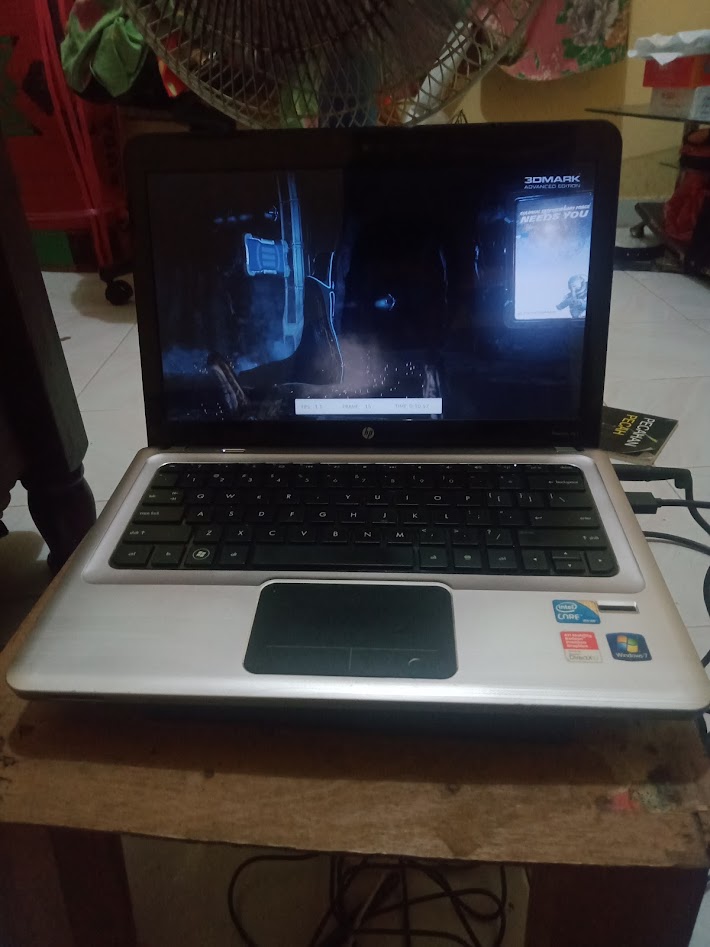Comparing: AMD A6-3400M vs Intel Core i7 720QM
In this comparison, we analyze two Processors: AMD A6-3400M and Intel Core i7 720QM, using synthetic benchmark tests to evaluate their overall performance. This side-by-side comparison helps users understand which hardware delivers better value, speed, and efficiency based on standardized testing. Whether you're building a new system or upgrading an existing one, this benchmark-driven evaluation offers valuable insights to guide your decision.
Specification Comparison Table
This specification comparison presents technical details of several devices or components to help you understand the key differences between each option. Use this table as a reference to determine which device best suits your needs.
| Specification | AMD A6-3400M | Intel Core i7 720QM |
|---|---|---|
| Architecture | x86 | x86 |
| Technology | 32 nm | 45 nm |
| Clock | 1.4 GHz - 2.3 GHz | 1.6 GHz - 2.8 GHz |
| Core/Thread | 4 / 4 | 4 / 8 |
| Segmen | Mobile | Mobile |
Submission Comparison Table
This submission comparison table displays the number and details of benchmark data submissions from various devices or components. This information helps you understand the performance based on the benchmarks that have been tested, as well as providing an overview of the consistency and popularity of the available benchmark results.
| No. | Benchmark Software | AMD A6-3400M | Intel Core i7 720QM |
|---|---|---|---|
| 1 | Cinebench - 2003 |
765 cb |
1211 cb |
| 2 | Cinebench - R11.5 |
1.79 pts |
2.71 pts |
| 3 | Cinebench - R15 |
153 cb |
220 cb |
| 4 | Cinebench - R20 |
291 pts |
527 pts |
| 5 | Geekbench3 - Multi Core |
2861 points |
4158 points |
| 6 | Geekbench3 - Single Core |
803 points |
1078 points |
| 7 | Geekbench4 - Multi Core |
3119 points |
4457 points |
| 8 | Geekbench4 - Single Core |
1060 points |
1420 points |
| 9 | Geekbench5 - Multi Core |
746 points |
917 points |
| 10 | Geekbench5 - Single Core |
214 points |
282 points |
| 11 | PiFast |
1min, 14sec, 310ms |
34sec, 20ms |
| 12 | SuperPi - 1M |
46sec, 984ms |
16sec, 52ms |
| 13 | wPrime - 32M |
27sec, 142ms |
16sec, 279ms |
| 14 | wPrime - 1024M |
13min, 40sec, 939ms |
8min, 13sec, 257ms |
| 15 | y-cruncher - Pi-25m |
17sec, 682ms |
12sec, 665ms |
Submission Comparison Chart
This chart visualizes the benchmark scores comparison between two hardware devices based on submitted data.
Media Gallery
A collection of photos of tested hardware. These images can help you identify the physical form, model, and variant of the hardware in question. These photos are from our own documentation, and if they are not available we may not be able to document them.
About Hardware AMD A6-3400M
Released in mid-2011, the AMD A6-3400M is a mobile processor from the Llano family designed for the mid-range laptop segment. It has 4 cores and 4 threads with a base speed of 1.4 GHz that can increase to 2.3 GHz thanks to AMD's Turbo Core technology. Carrying a 32nm fabrication process, the A6-3400M offers good power efficiency with a TDP of 35W, making it a popular choice among conventional laptop users at the time. The main advantage of this processor lies not only in having enough cores for light multitasking, but also in the integration of an onboard GPU, the AMD Radeon HD 6520G. This GPU has 320 shader cores based on the Terascale 2 architecture, which is capable enough to run light graphics applications to older games with low resolution and graphics quality settings. The combination of CPU and GPU in one chip is designed to provide a balance between computing and graphics performance in one energy-efficient package.
In terms of performance, the A6-3400M can handle everyday computing needs such as browsing the internet, watching videos, listening to music, typing documents, and other light productivity tasks. However, in heavier usage scenarios or multitasking with many applications open at once, its performance starts to show limitations, especially when combined with a small RAM capacity such as 2GB. When compared to the same generation of Intel Core i3 processors, the A6-3400M does lag behind in single-thread performance, which is an important aspect for running modern applications that are not fully optimized for multi-core. In tests on a Lenovo Sabine B475 device with 2GB DDR3 RAM and Windows 7 operating system, the A6-3400M's performance showed that it is still quite responsive for light use, although it is no longer ideal for today's heavier workloads. Even so, the A6-3400M is still an attractive option for users who want a budget laptop with basic multimedia capabilities and a decent user experience for everyday needs.
Hardware Tested:
Device: Lenovo Sabine B475
RAM: 2GB DDR3
OS: Windows 7
Thursday, 24 November 2022 05:29:20 | Update: 1 month ago
About Hardware Intel Core i7 720QM
The Intel Core i7-720QM, launched in Q3 2009, was one of the first mobile quad-core processors to feature Intel's Nehalem microarchitecture, specifically the Clarksfield variant. Targeted at high-performance laptops, such as gaming machines and mobile workstations, the i7-720QM brought 4 physical cores and 8 threads to the mobile platform, thanks to Hyper-Threading Technology providing a significant boost in multi-threaded workloads like video editing, 3D rendering, and other professional-grade applications. The processor runs at a base clock speed of 1.6 GHz, but it can dynamically increase up to 2.8 GHz using Intel Turbo Boost, depending on thermal headroom and power availability.
Manufactured using a 45nm process, the i7-720QM has a TDP of 45W, which is quite high by today's mobile CPU standards. This thermal demand necessitated more robust cooling solutions in laptops that featured the chip. Unlike modern CPUs, the i7-720QM does not come with integrated graphics, which means systems based on this processor require a dedicated GPU often from AMD or NVIDIA for graphics processing and display output. As such, it was typically paired with mid-to-high-end discrete graphics cards in its time, making it a solid choice for gaming and multimedia laptops in the late 2000s and early 2010s.
While the Core i7-720QM was a powerhouse during its release, its performance and efficiency are significantly outpaced by modern CPUs built on smaller nodes and with higher IPC (Instructions Per Clock). Nevertheless, legacy laptops using the i7-720QM can still be viable for basic computing tasks like web browsing, document editing, or watching videos especially if paired with an SSD upgrade and increased RAM. Users running Windows 10 on such systems may experience some limitations, but with proper optimization and lightweight software, the CPU can still deliver a usable experience in non-demanding environments.
Hardware Detail:
Device: HP Pavilion dv3-4054TX
RAM: 4GB DDR3 Single Channel
OS: Windows 7, Windows 10
Tuesday, 19 July 2022 19:48:49 | Update: 1 month ago





